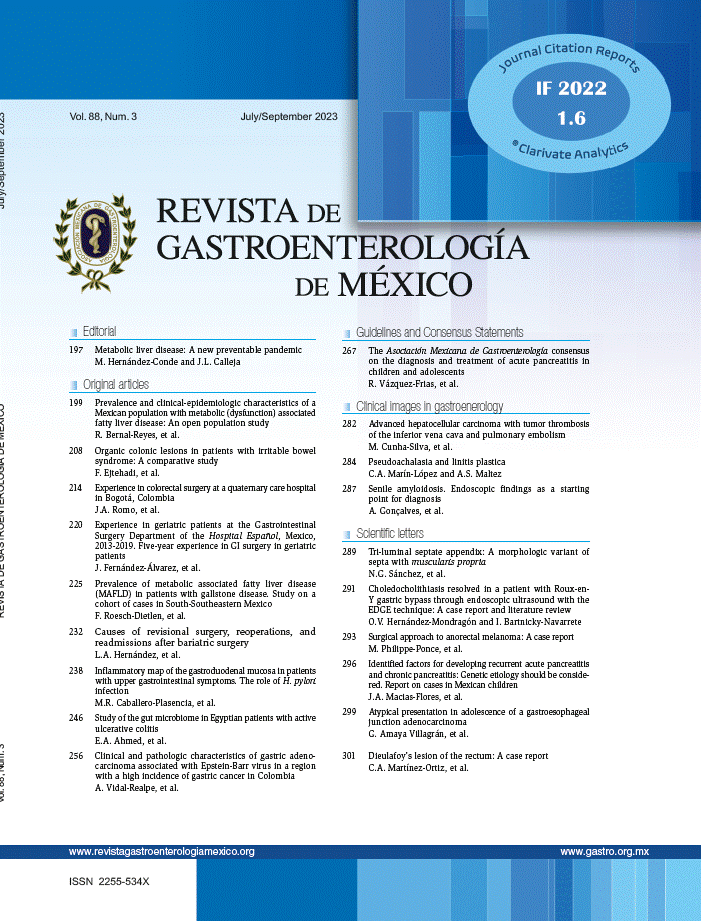An 80-year-old man, with a past medical history of ictus and chronic ischemic heart disease, sought medical attention for an umbilical cutaneous lesion (Fig. 1) of 8-month progression. It was considered omphalitis and treated topically with no clinical response. Given its persistence, the skin lesion was biopsied and the anatomopathologic study reported infiltration due to adenocarcinoma of colorectal origin.
A fiberoptic colonoscopy examination found a stenosing lesion at 30cm from anal margin consistent with adenocarcinoma, confirming the origin of the cutaneous metastasis. Peritoneal and bilateral adrenal and lung metastases were identified in the extension CT scan.
Given the advanced stage IV disease with no possible curative treatment, the multidisciplinary committee agreed upon endoscopic placement of a stent over the sigmoid lesion, as shown in Fig. 2A and B. Palliative chemotherapy was administered and the patient died 4 months after the definitive diagnosis was made.
The authors declare this article contains no personal information that could identify the patient, given that it presents limited images of the disease studied. Even so, verbal informed consent was obtained from the patient and his relatives for obtaining the images, as well as for the article’s publication.
Financial disclosureNo financial support was received in relation to this article.
The authors declare that there is no conflict of interest.







